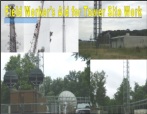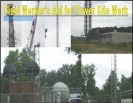Podcast: Play in new window | Download | Embed
Subscribe: Apple Podcasts | RSS
Hey, I was looking over the NATE webpage, (for those of you who are green NATE = National Association of Tower Erectors), and they have a new STAR program. (NATE did not ask me to write any of this, I just think it looks interesting!) Now, this has some interesting things in it and I would like to go over them. The page for the program is here. They will have a live webinar on September 23rd at 11AM EDT. We should all learn from this if possible. Just a warning, it may be boring, I have attended some NATE webinars in the past and they are geared for the tower crew company owner. If you are a climber, keep that in mind! Don’t complain because they set this up to help the owner understand compliance. The guy speaking, Edwin G. Foulke, Jr, is what I would call a legal labor expert having been a leader at OSHA and now he is a partner in the firm Fisher and Phillips LLP. The guy’s write-up is on the web page and is impressive. Let’s see if he can help the tower industry.
First off, there is some free documentation that you should grab. These are all PDF documents that you can download. They may help you set the foundation for some of your checklists that you should already have.
- The Tower Owner Checklist
- The checklist for evaluating qualified contractors
- The Telecommunication and broadcast tower inspection checklist
They may not be all that you need but they will help you create your internal documentation. Use them for what they are, a tool and a starting point.
On iTunes search for wade4wireless today!
Don’t hesitate, subscribe and write a review!
You could always subscribe to the blog!
[emailpickup]
So what else did I read in this? Well, let me tell you, if you go to the Eligibility and Requirements then you will see something very interesting. They put requirements on the training. Go to the “Requisite Levels of Training” section. They have 10 OSHA or equivalent for all personnel working at the tower site. I see that meaning not only the climbers, but the ground guys, the technicians, and the engineers. Even the construction workers building the shelter. Anyone who might be working at the tower site. Anyone there should have the 10 hour OSHA training. This is actually very common in all of the construction industry.
Then they state that the 30 hour OSHA training, or equivalent, is required for the competent person on site or the supervisor. Did you read that? They put the requirements, or at least one of them, on the competent person on the site. How many of you had the 30 hour OSHA training? I know many of you did but here it is actually put in writing that it should be required for the competent person on site. This is very important. Somebody has to lay down the requirements and NATE took the first step. This makes a difference as to who is considered a competent person. How many competent people have a 30 hour OSHA? You tell me.
OSHA defines a competent person here and here. They say that a competent person is capable of identifying 1) existing and predictable hazards, 2) working conditions that are unsanitary, hazardous, or dangerous to employees, and 3) who has authorization to take prompt corrective measures to eliminate them. “By way of training and/or experience, a competent person is knowledgeable of applicable standards, is capable of identifying workplace hazards relating to the specific operation, and has the authority to correct them. Some standards add additional specific requirements which must be met by the competent person”. In 1926.32(f) it states, “”Competent person” means one who is capable of identifying existing and predictable hazards in the surroundings or working conditions which are unsanitary, hazardous, or dangerous to employees, and who has authorization to take prompt corrective measures to eliminate them.” Get it? A competent person may not only identify the hazards but they have the ability to take corrective action. Who is your competent person on site? Would you take corrective action? Would you do it even if it costs your crew an extra day? Would you honestly?
Then NATE states that all people working above 6 feet should be trained in fall protection. Well that seems really obvious to me, but trained how? On the job or in a class or by the company or is it up to the companies discretion? It seems obvious that companies should do this but then again look at the company that was recently fined for sending workers up the tower unprepared.
So what are the requirements of your company? Are the standards in writing for the company. I often get mixed feedback. Some have a written policy while others don’t. We are living in a world where we need to document everything and we need to make sure we have it posted somewhere for all of the employees to see. Make sure that your company has everything available for everyone to see.
Defining the requirements is something that should be done day one, especially for a competent person. It should be changing as the industry changes, so it may change monthly. All requirements need to be in writing and they should be reviewed often. This industry is still maturing and as the bidding process may drive some prices down, safety should never be compromised. Safety is not cheap but neither is carelessness.
Tell me what you think!
BIG LOGS!
So how is your company at keeping safety and training logs? Do they do a good job? How do you know? Did you see them? Can you go back a year? Do they document the training? Do they keep a copy of all of your certifications? They should need them to present to the customer and the tower owner, so if they are not keeping them on record, in paper or soft copy, then what is going on? Maybe you want to look into that.
BIG BUTS!
When you ask you company for some of this information, do they say “yeah but”? Can they produce the documentation you ask for? Will they open up about how much they insure the job? Do they? We all have buts, and if they are big buts then you need to evaluate what is up their but. Due diligence is key to awareness and protection. Be aware of how your company is handling their logs and avoid the buts!
More from OSHA:
Required reading – https://www.osha.gov/Publications/OSHA3710.pdf
https://www.osha.gov/workers.html
Remember – the fallen climbers have families! Remember that some climbers need some help!
Click here to Support the Hubble Foundation
Books below. Understand that you can build a career path to keep you growing in this industry.
Kindle:
My PDF books so you can buy with PayPal:
Whistle blower information:
http://www.mondaq.com/article.asp?articleid=330216
http://www.regulations.gov/#!documentDetail;D=OSHA-2011-0540-0001








